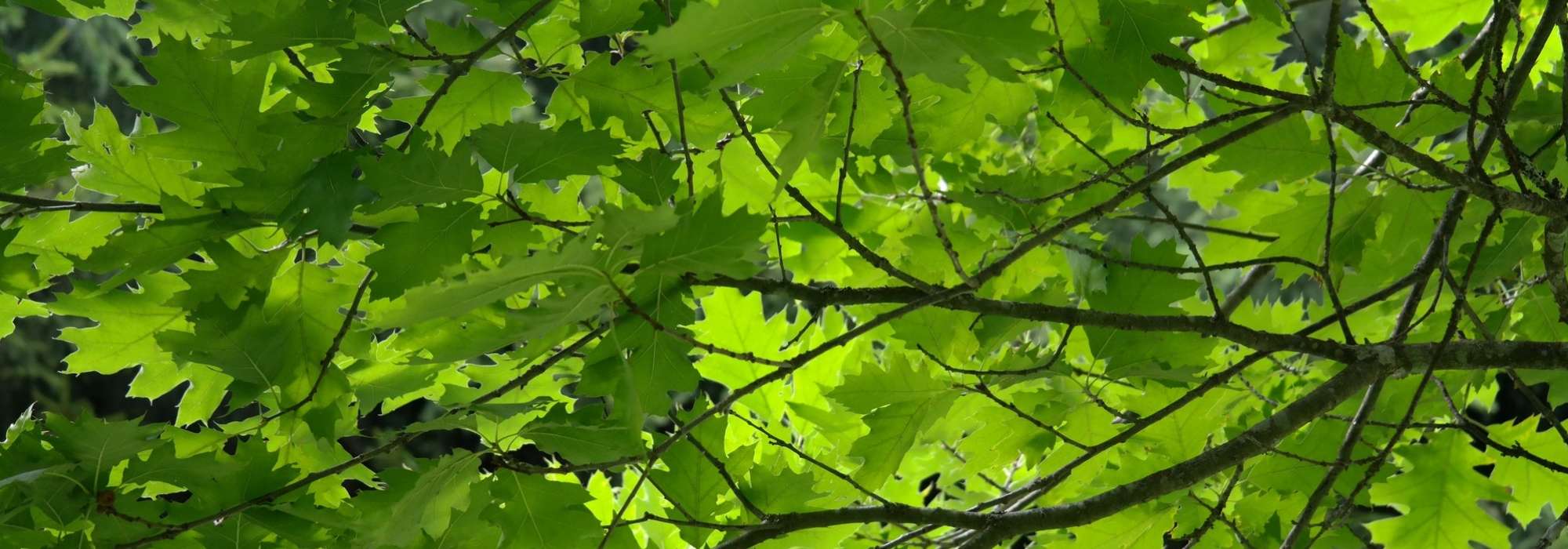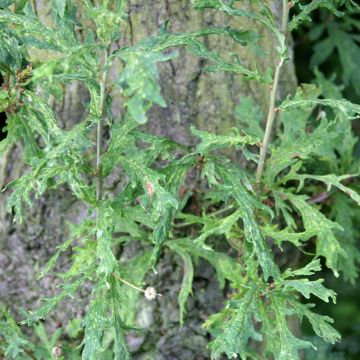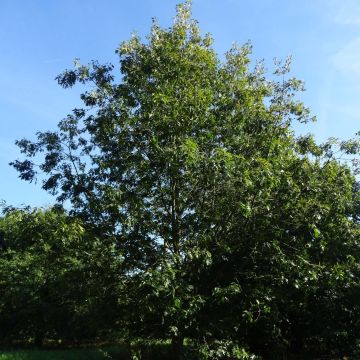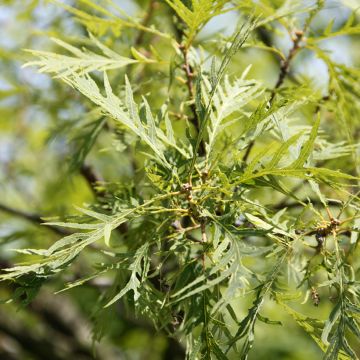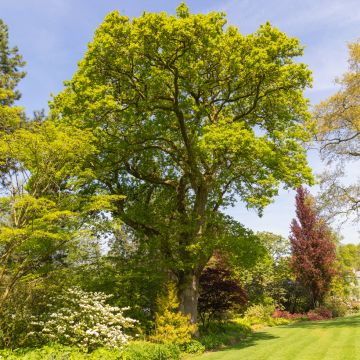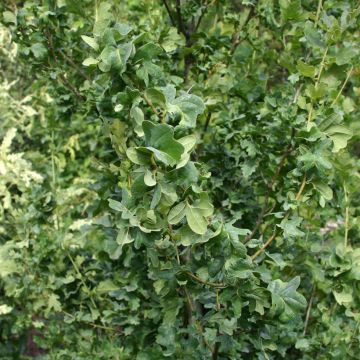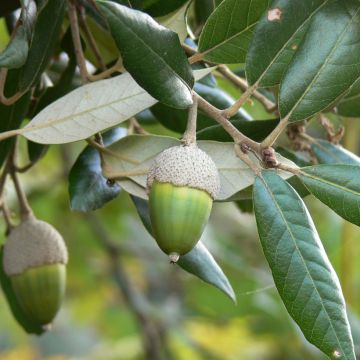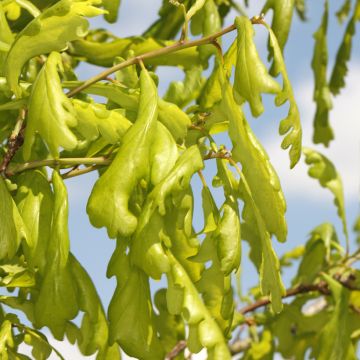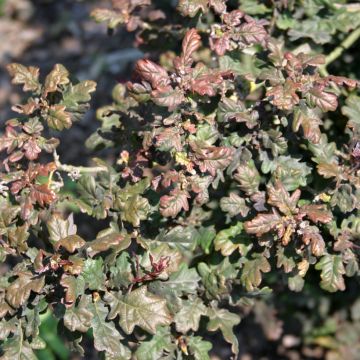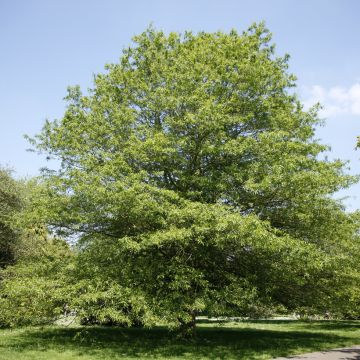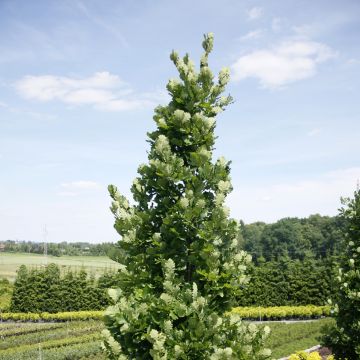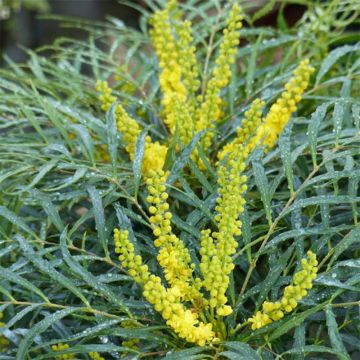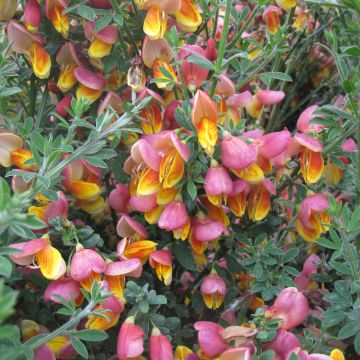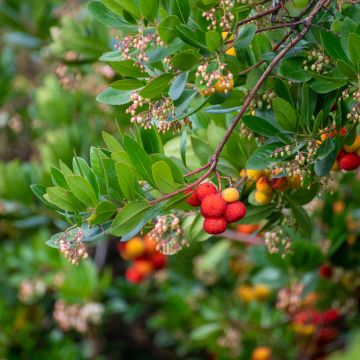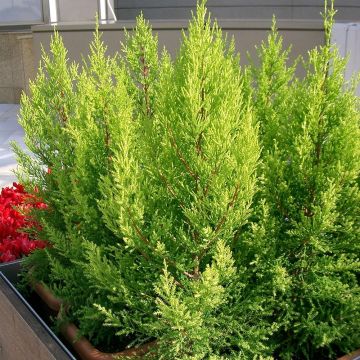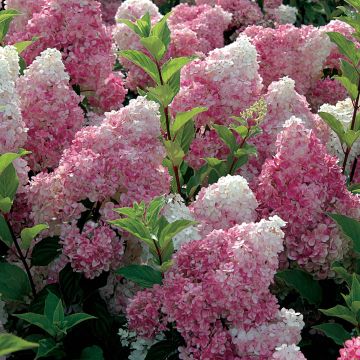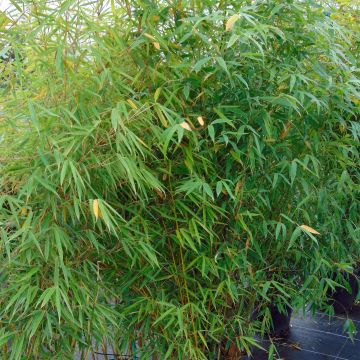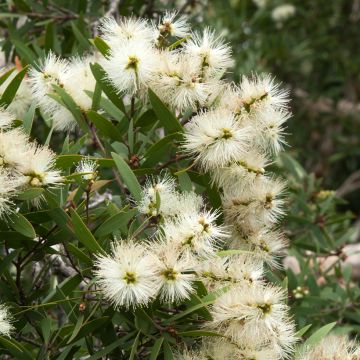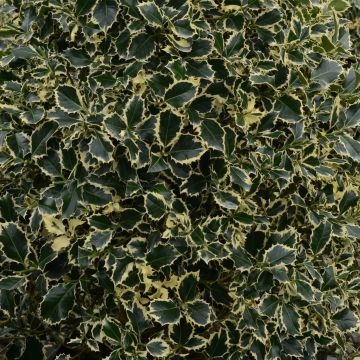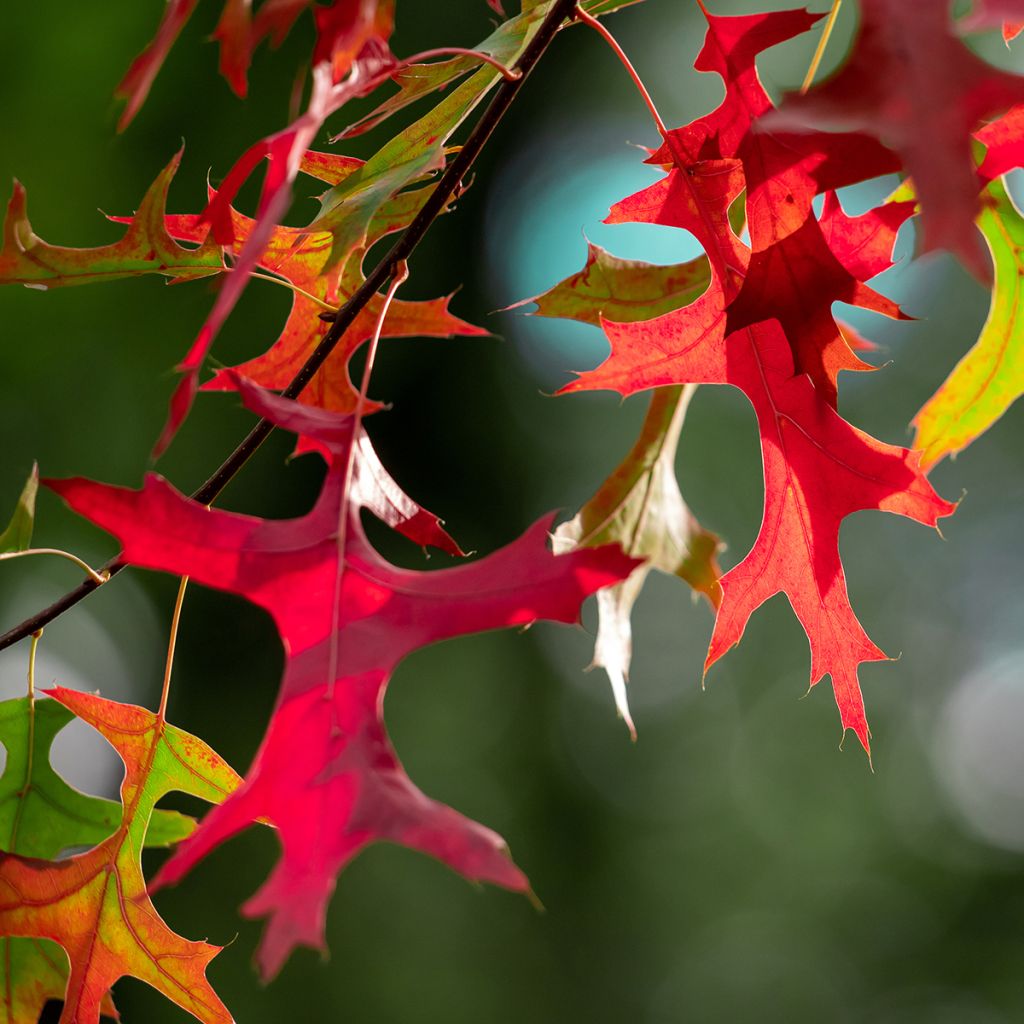

Quercus palustris Betty Jean - Pin Oak
Quercus palustris Betty Jean - Pin Oak
Quercus palustris Betty Jean
Pin Oak, Swamp Oak
Special offer!
Receive a €20 voucher for any order over €90 (excluding delivery costs, credit notes, and plastic-free options)!
1- Add your favorite plants to your cart.
2- Once you have reached €90, confirm your order (you can even choose the delivery date!).
3- As soon as your order is shipped, you will receive an email containing your voucher code, valid for 3 months (90 days).
Your voucher is unique and can only be used once, for any order with a minimum value of €20, excluding delivery costs.
Can be combined with other current offers, non-divisible and non-refundable.
Home or relay delivery (depending on size and destination)
Schedule delivery date,
and select date in basket
This plant carries a 24 months recovery warranty
More information
We guarantee the quality of our plants for a full growing cycle, and will replace at our expense any plant that fails to recover under normal climatic and planting conditions.
Does this plant fit my garden?
Set up your Plantfit profile →
Description
Quercus palustris 'Betty Jean', also known as swamp oak, is a magnificent tree that can reach a height of 15 to 25 metres (49 to 82 feet). It is particularly appreciated for its decorative foliage and elegant silhouette. Contrary to its name, it does not thrive in heavy, limestone, clayey, and compact soils. It prefers deep, acidic, and moist soils. Its deciduous foliage is spectacular, with deeply lobed leaves, a beautiful bright green colour in summer, and shades of scarlet red in autumn. Due to its relatively fast growth and imposing habit, this tree is perfectly suited for large gardens.
Quercus palustris, commonly known as swamp oak, is a tree of the Fagaceae family, just like beech and chestnut. This large tree, native to the eastern and central United States, is found in certain parts of Tennessee and Virginia to the Great Lakes region in Canada. It has also been introduced to colder regions of southern Australia. In 1770, it was introduced to Europe where it is planted in parks for ornamental purposes because of the beauty of its autumn foliage.
The 'Betty Jean' cultivar was selected in 2007 by Ryan Russell in the United States, in the state of Missouri, at the University of Missouri Columbia. In 2010, the mother tree was about 50 years old and measured approximately 22 metres (72 feet) in height and 20 metres (66 feet) in width. Ryan Russell was intrigued by the unusual shape of the leaves and their autumn colours, which led him to retain this distinct natural selection from the typical species. Quercus palustris 'Betty Jean' can reach a height of 20 to 25 metres (66 to 82 feet) with a spread of 15 to 20 metres (49 to 66 feet) and its crown takes on a conical shape. The trunk, very straight, is covered with a smooth greyish bark. Its branches branch out into many small thin twigs, which can be more or less thorny, earning it the name of Pin Oak. The upper branches spread horizontally in the crown. The lower branches hang down in a picturesque way, giving the tree a particularly elegant shape. The deciduous leaves, deeply cut into 5 to 7 lobes, measure from 7 to 11cm (3 to 4in) in length. Lustrous green in the heart of summer, they take on magnificent autumnal hues. The discolouration of the swamp oak leaves occurs in an ascending manner. For a certain period, the upper parts of the crown can turn a bright red colour, while the leaves of the lower branches remain completely green. In late autumn, they turn brown and persist on the twigs until winter. The swamp oak develops early flowers in early spring, which then give rise to small, highly decorative acorns. These acorns, hemispherical in shape and up to 2cm (1in) in diameter, mature in the second year. They are surrounded by a cup and develop on short stalks. The swamp oak has a taproot, although its root system is not very deep. In a garden, it can have a lifespan of 90 to 120 years.
The Swamp Oak 'Betty Jean' is a tall tree that grows freely. Thanks to its elegant appearance and colourful foliage, it adds an original touch to your space. It is a hardy tree that withstands winter cold, able to withstand temperatures down to -25°C (-13°F). It tolerates wet soils better than other trees, but it can adapt to almost any soil with a tendency towards acidity, even those that are very dry. It can be planted alone or in groups for filtered shade or to add colour to the garden. It is recommended for large gardens, parks, streets, squares, and large lawns. Why not accompany the Swamp Oak 'Betty Jean' with Liquidambar (Liquidambar styraciflua), the Bald Cypress (Taxodium distichum), the Northern Red Oak (Quercus rubra), the Black Tupelo (Nyssa sylvatica), or the Common Ash (Fraxinus excelsior) which have similar requirements. Ground cover or shade-tolerant plants suitable for slightly moist soils can also be planted at its base, such as: Japanese Spurge (Pachysandra terminalis), Algerian Ivy (Hedera algeriensis Algerian Bellecour), Greater Periwinkle (Vinca major), or Lady Fern (Athyrium filix-femina).
Plant habit
Flowering
Foliage
Botanical data
Quercus
palustris
Betty Jean
Fagaceae
Pin Oak, Swamp Oak
Cultivar or hybrid
Other Oak
View all →Planting and care
Plant your Quercus palustris 'Betty Jean' in autumn or spring, choose a clear location, in non-burning sunlight, where the soil is deep and keep in mind the space it will take up in the long run. This tree does not tolerate calcareous and/or basic soils well. Also avoid soils that are too clayey and compact. If necessary, create a drainage pit with stones if your soil is suffocating. If your soil is poor, adding leaf compost will be beneficial. Maintain regular watering during the summer following the planting and make sure to protect it from prolonged droughts for another year, mulching can help keep the ground cool and space out the watering. It is important to keep in mind that this tree needs consistently moist soil, at least in depth. It is perfectly frost resistant. Stake the young plants and then let nature take its course. Pruning is unnecessary, except for young trees that do not grow evenly. In February, before the vegetation resumes, remove dead or diseased wood or wood that disrupts the tree's habit.
Planting period
Intended location
Care
Planting & care advice
This item has not been reviewed yet - be the first to leave a review about it.
Similar products
Haven't found what you were looking for?
Hardiness is the lowest winter temperature a plant can endure without suffering serious damage or even dying. However, hardiness is affected by location (a sheltered area, such as a patio), protection (winter cover) and soil type (hardiness is improved by well-drained soil).

Photo Sharing Terms & Conditions
In order to encourage gardeners to interact and share their experiences, Promesse de fleurs offers various media enabling content to be uploaded onto its Site - in particular via the ‘Photo sharing’ module.
The User agrees to refrain from:
- Posting any content that is illegal, prejudicial, insulting, racist, inciteful to hatred, revisionist, contrary to public decency, that infringes on privacy or on the privacy rights of third parties, in particular the publicity rights of persons and goods, intellectual property rights, or the right to privacy.
- Submitting content on behalf of a third party;
- Impersonate the identity of a third party and/or publish any personal information about a third party;
In general, the User undertakes to refrain from any unethical behaviour.
All Content (in particular text, comments, files, images, photos, videos, creative works, etc.), which may be subject to property or intellectual property rights, image or other private rights, shall remain the property of the User, subject to the limited rights granted by the terms of the licence granted by Promesse de fleurs as stated below. Users are at liberty to publish or not to publish such Content on the Site, notably via the ‘Photo Sharing’ facility, and accept that this Content shall be made public and freely accessible, notably on the Internet.
Users further acknowledge, undertake to have ,and guarantee that they hold all necessary rights and permissions to publish such material on the Site, in particular with regard to the legislation in force pertaining to any privacy, property, intellectual property, image, or contractual rights, or rights of any other nature. By publishing such Content on the Site, Users acknowledge accepting full liability as publishers of the Content within the meaning of the law, and grant Promesse de fleurs, free of charge, an inclusive, worldwide licence for the said Content for the entire duration of its publication, including all reproduction, representation, up/downloading, displaying, performing, transmission, and storage rights.
Users also grant permission for their name to be linked to the Content and accept that this link may not always be made available.
By engaging in posting material, Users consent to their Content becoming automatically accessible on the Internet, in particular on other sites and/or blogs and/or web pages of the Promesse de fleurs site, including in particular social pages and the Promesse de fleurs catalogue.
Users may secure the removal of entrusted content free of charge by issuing a simple request via our contact form.
The flowering period indicated on our website applies to countries and regions located in USDA zone 8 (France, the United Kingdom, Ireland, the Netherlands, etc.)
It will vary according to where you live:
- In zones 9 to 10 (Italy, Spain, Greece, etc.), flowering will occur about 2 to 4 weeks earlier.
- In zones 6 to 7 (Germany, Poland, Slovenia, and lower mountainous regions), flowering will be delayed by 2 to 3 weeks.
- In zone 5 (Central Europe, Scandinavia), blooming will be delayed by 3 to 5 weeks.
In temperate climates, pruning of spring-flowering shrubs (forsythia, spireas, etc.) should be done just after flowering.
Pruning of summer-flowering shrubs (Indian Lilac, Perovskia, etc.) can be done in winter or spring.
In cold regions as well as with frost-sensitive plants, avoid pruning too early when severe frosts may still occur.
The planting period indicated on our website applies to countries and regions located in USDA zone 8 (France, United Kingdom, Ireland, Netherlands).
It will vary according to where you live:
- In Mediterranean zones (Marseille, Madrid, Milan, etc.), autumn and winter are the best planting periods.
- In continental zones (Strasbourg, Munich, Vienna, etc.), delay planting by 2 to 3 weeks in spring and bring it forward by 2 to 4 weeks in autumn.
- In mountainous regions (the Alps, Pyrenees, Carpathians, etc.), it is best to plant in late spring (May-June) or late summer (August-September).
The harvesting period indicated on our website applies to countries and regions in USDA zone 8 (France, England, Ireland, the Netherlands).
In colder areas (Scandinavia, Poland, Austria...) fruit and vegetable harvests are likely to be delayed by 3-4 weeks.
In warmer areas (Italy, Spain, Greece, etc.), harvesting will probably take place earlier, depending on weather conditions.
The sowing periods indicated on our website apply to countries and regions within USDA Zone 8 (France, UK, Ireland, Netherlands).
In colder areas (Scandinavia, Poland, Austria...), delay any outdoor sowing by 3-4 weeks, or sow under glass.
In warmer climes (Italy, Spain, Greece, etc.), bring outdoor sowing forward by a few weeks.






























